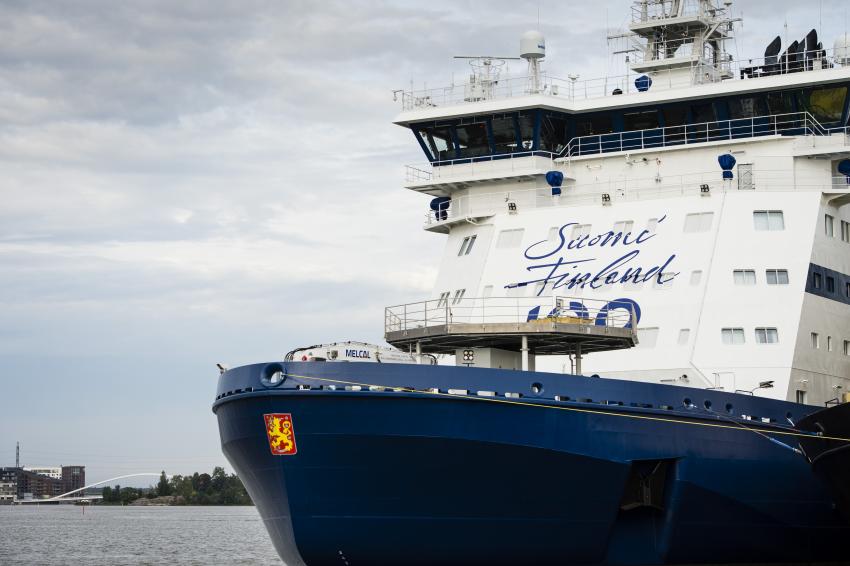Bosch Supplies Rugged Cameras for the Polaris Icebreaker
Finland is dependent on foreign trade it cannot allow ice to block its shipping lanes and many ports, disrupting exports and imports. The country consequently has the worlds secon...
Finland is dependent on foreign trade – it cannot allow ice to block its shipping lanes and many ports, disrupting exports and imports. The country consequently has the world's second largest fleet of icebreakers, the latest of which, Polaris, was completed just in time for the centenary year of Finland's independence. This modern vessel is equipped with 29 Bosch HD cameras to ensure safety.
Despite its small size, Finland is something of an icebreaking superpower – it has more icebreakers than any country except Russia, which operates a massive fleet of around 50 vessels. Finnish company Arctia, the owner of Polaris, has nine of these ships, but Finland occupies a leading position in the industry, primarily because the majority are built here. A crew of 17 works under Capitan Pasi Järvelin on board the Polaris. "When a ship is waiting to access a port and requests our help, we sail next to the vessel and break the pressure caused by the ice around the customer ship. We then help the vessel to enter the harbor. To achieve this, the icebreaker needs to be agile. In windy conditions, the course that we open up may only remain open for 15 seconds, after which the channel freezes back up”, he explains.
Fit for the Job
Polaris departs for the Bay of Bothnia around the end of the year and stays there until May of the following year. During this period, the officers and crew work 12 hours a day, 20 days at a time. They then have approximately nine days leave before the start of their next stint. The working hours of the Captain and Chief Engineer vary depending on the conditions, but can in principle stretch to 24 hours a day. The long shifts and challenging working conditions impose tough requirements on occupational safety. Järvelin was involved in designing of the new icebreaker virtually from the outset. "I was able to strongly influence everything about the vessel's design, and this has been enormously beneficial to my work," explains Järvelin. "In my opinion, the best aspects of Polaris are her superb maneuverability and three Azipod thrusters, which ensure a wider course, outstanding icebreaking properties, as well as the comfort of working with robust interior equipment and a modern bridge.”
Polaris is equipped with 29 Bosch HD cameras located on deck and in the interior. Inside the vessel, they are positioned in locations such as the engine room and engineering space. “If necessary, we can retrospectively check the camera recordings to investigate an incident. Cameras save time – routine tours of the various parts of the vessel don't need to be conducted as frequently.
See at Sea
The exterior cameras have been installed at locations such as the mast and deck structures. The exterior cameras allow us to monitor the ice and customer vessels. We can use the cameras located on the stern to monitor changes in our distance to vessels that we are guiding in or out of port. The vessel may be only a few meters behind the icebreaker or even tethered to the icebreaker if it's being towed," he explains. According to Järvelin, the directional cameras also function well in arctic winter conditions on the Bay of Bothnia. At the top of the mast, a 360-degree directional camera is mounted, which also operates flawlessly in darkness.
All of the cameras can be controlled remotely and adjusted both horizontally and vertically. Their focusing and zoom features are indispensable in the icebreaker's tough operating environment. The cameras are equipped with wipers that can be actuated from the bridge in adverse weather conditions, whether rain, wind or sleet.
Tough and High-Tech
The MIC IP camera family is built for extremes such as high winds, rain, fog, 100 percent humidity, temperatures as low as -40°C (-40°F) to as high as +65°C (+149°F), extreme vibration, high impacts and even corrosion. The cameras combine a rugged design with built-in intelligent video analytics while moving and metadata fusion. They cope with challenging physical environments such as a national border in the blazing desert, a wintry railway yard in arctic temperatures, a partly foggy airport, a factory largely wreathed in smoke and dust or the deck of an icebreaker.









